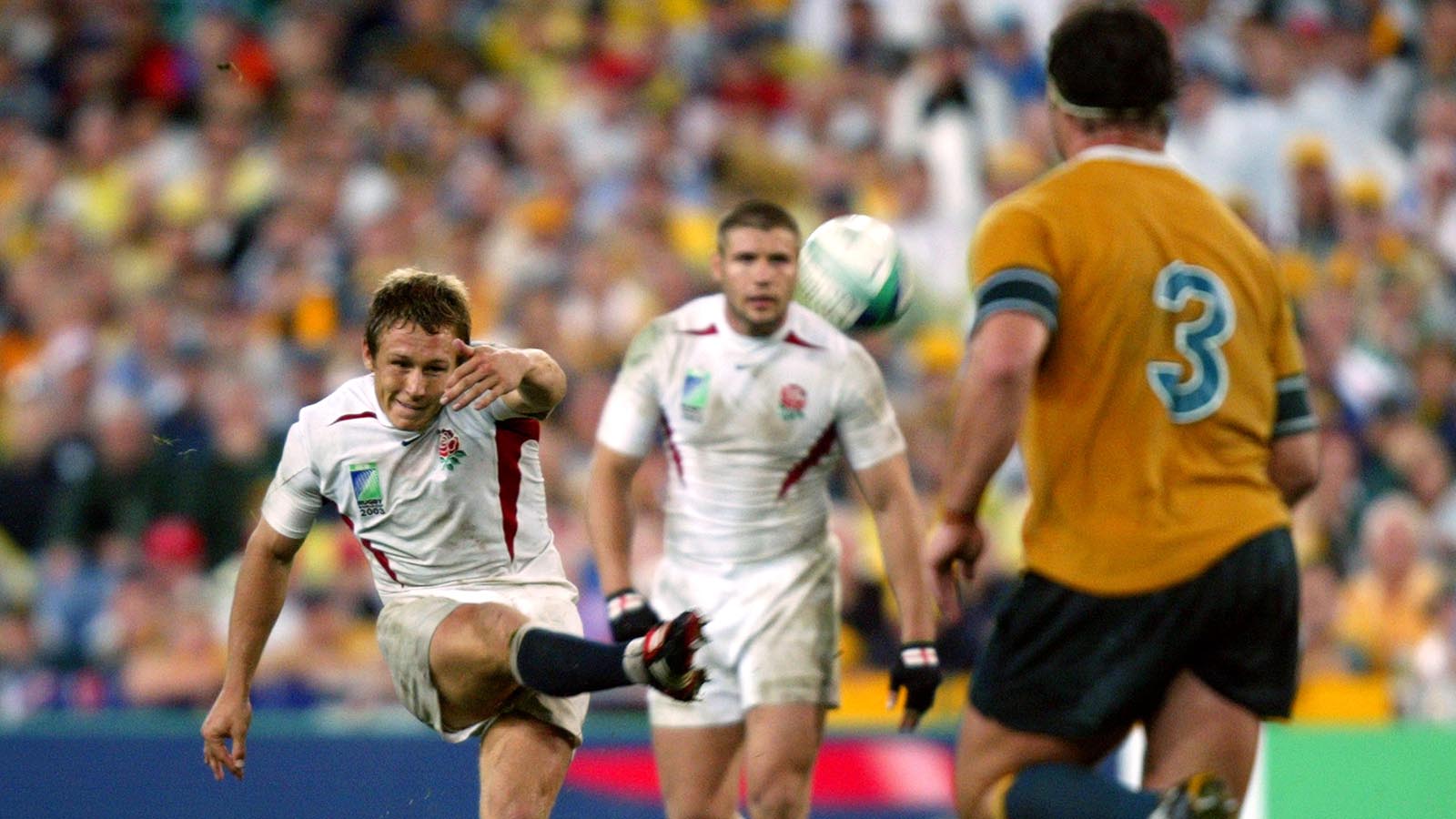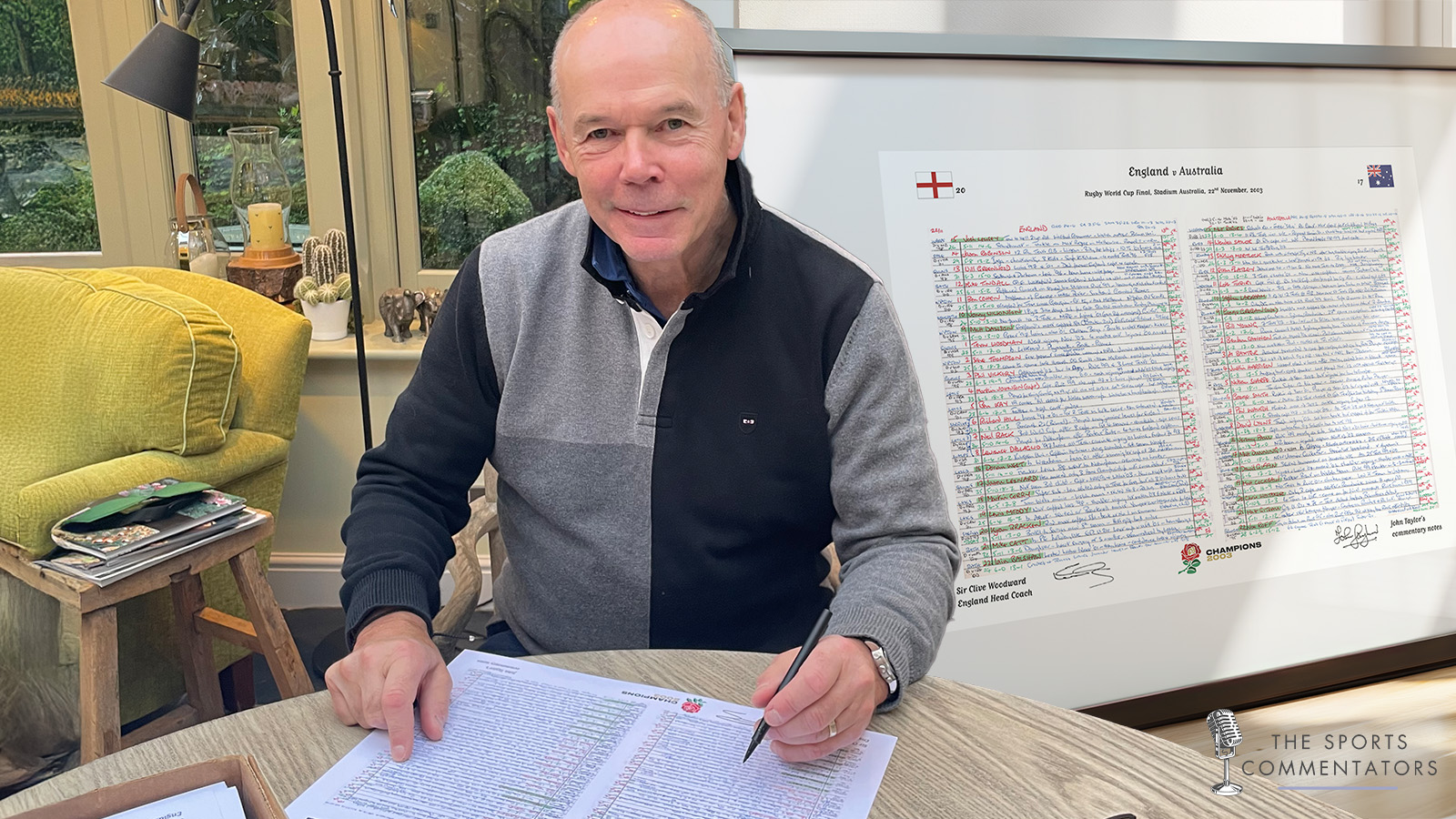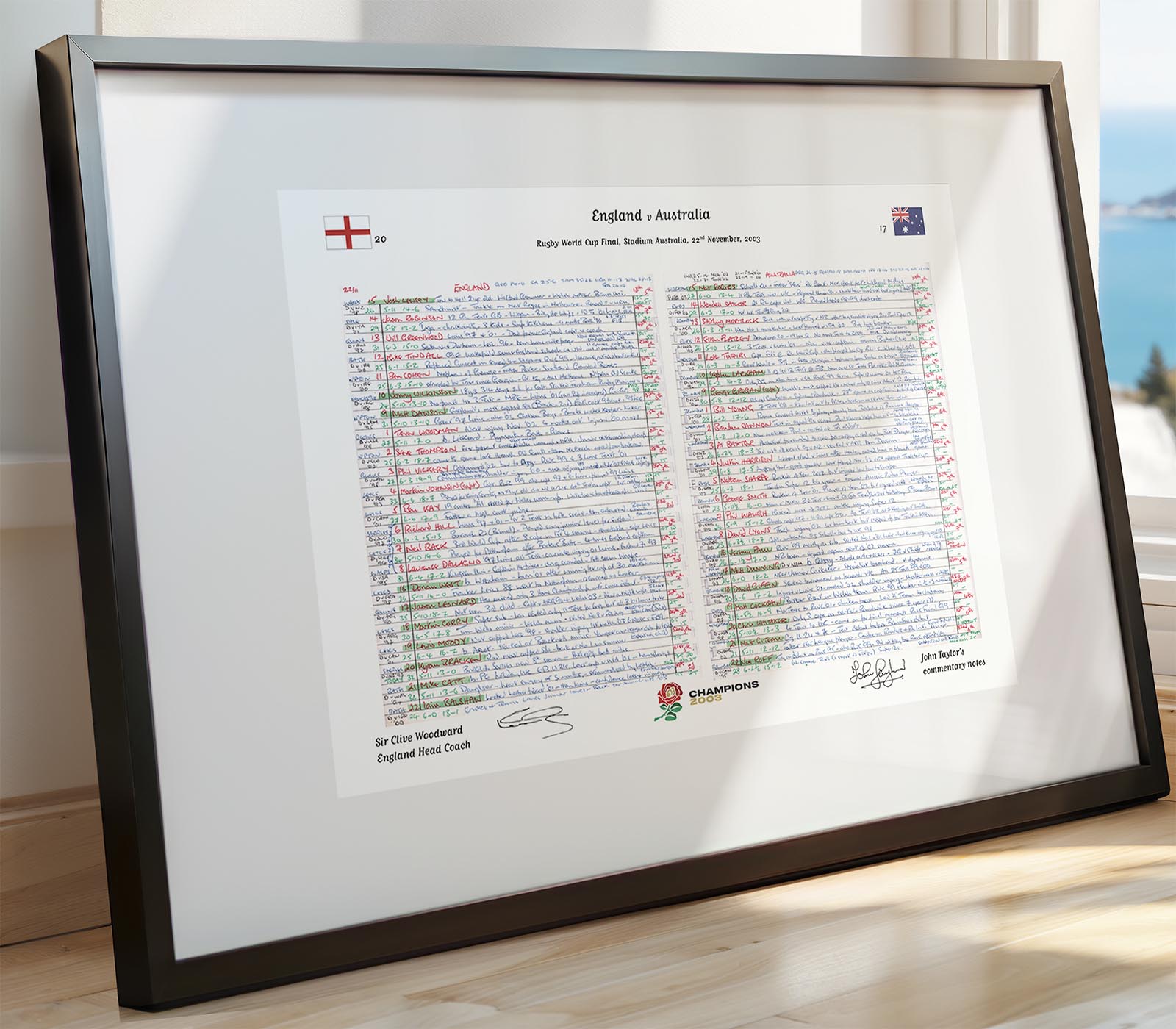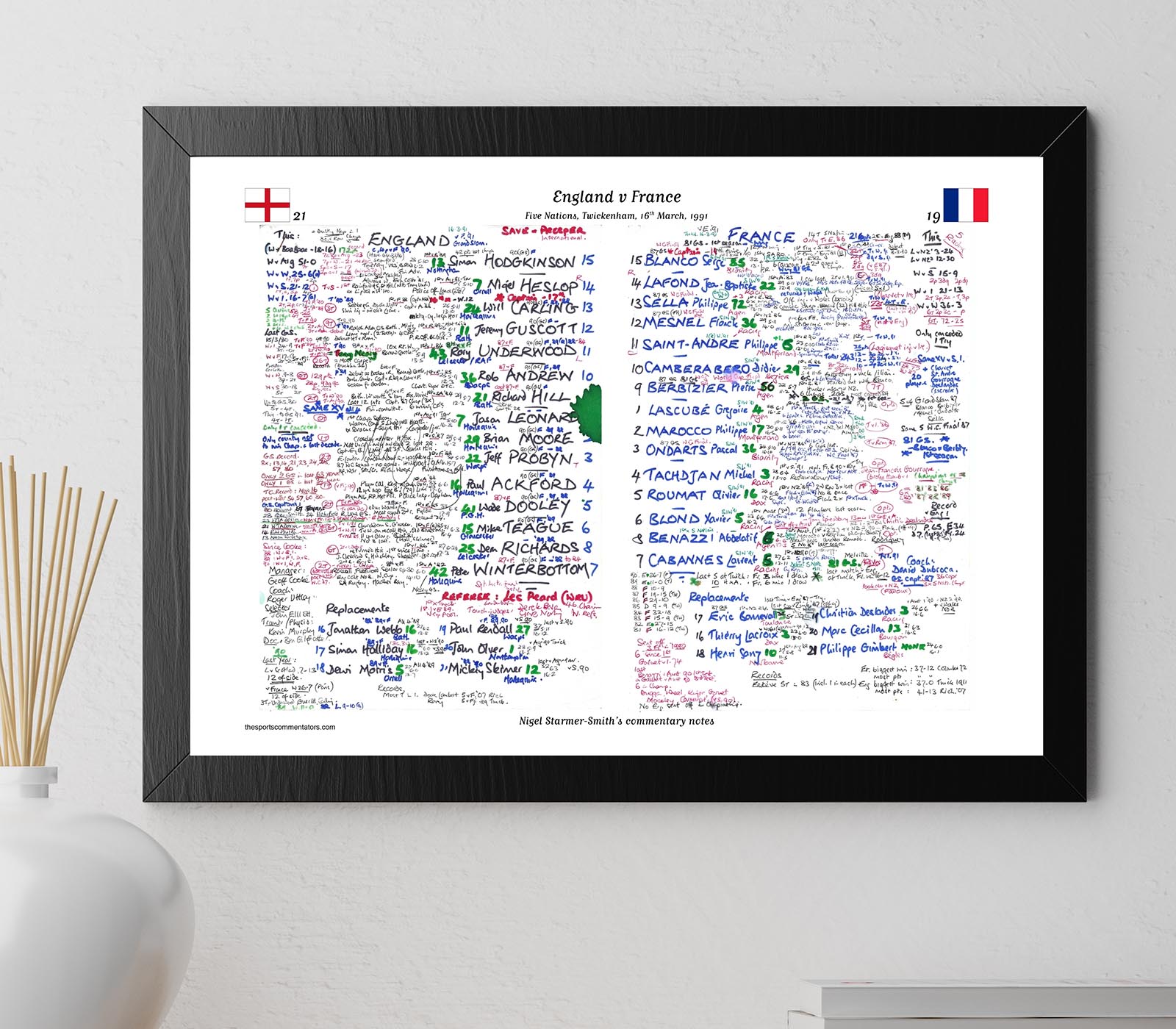There are moments in sport that transcend the game. Moments that become etched into the cultural memory of a nation. November 22, 2003, was one of those when England, against the odds, lifted the Webb Ellis Trophy in Sydney.
But while the players wrote history on the pitch, one man was scripting it in real time from the commentary box: John Taylor.
Now, thanks to The Sports Commentators, you can own a piece of that moment. Not a replica, not a reimagining, but the actual handwritten commentary notes Taylor used to guide millions through the most iconic match in English rugby history. It’s the DNA of the broadcast, and it’s available to buy here.
The notes that told the story
Commentary is theatre. It’s timing, tone, and trust. And the notes are the script.
What makes Taylor’s sheets so compelling is their rawness: the scribbled reminders, tactical cues, and player prompts. These weren’t written for posterity; they were built for the moment. And yet they now offer a rare glimpse into the mind of a master broadcaster at work.
Scan the sheets and you’ll see names like Wilkinson, Dallaglio and Johnson, not just listed, but annotated. There are tactical observations, emotional triggers, and the kind of shorthand only a seasoned pro could decode. It’s rugby, distilled into a commentator’s lexicon. And when Wilkinson’s drop goal sailed through the posts, Taylor had the line ready, not rehearsed, but rooted in the prep.

The beauty of the handwritten gameplan
There’s something deeply human about these sheets. The ink bleeds with intent. The handwriting, urgent, precise, sometimes chaotic, mirrors the rhythm of the game itself. You can see where Taylor’s mind was racing, where he anticipated drama, where he built the scaffolding for the words that would define the moment.
This isn’t digital, it’s analogue rugby storytelling. Every underline, every margin note carries emotion. It’s the kind of detail that only comes from someone who’s lived the game rather than just watched it, giving us more than just commentary aids, more so rugby artefacts.
From structure to storytelling
Taylor’s sheets are a masterclass in preparation.
Every player, every stat, every tactical nuance is mapped out, a visual representation of how a commentator sees the game before it unfolds.
It’s the same kind of preparation that underpinned England’s tactical shift in 1991, when Geoff Cooke’s side abandoned flair for structure and ground out a brutal win over France in the World Cup quarter-final. That match was won in the margins; in the maul, in the tackle, in the territorial grind. Taylor’s notes reflect that same understanding: rugby is a game of shape, pressure, and control.
Fast forward to 2019, and England’s semi-final dismantling of New Zealand. Eddie Jones’ side didn’t just play well; they executed a tactical plan with surgical precision. The commentary that day was built on clarity, just like the game itself. And that clarity starts with the notes.
Taylor’s 2003 sheets show the same discipline. Positional grids, key match-ups, shorthand cues, all designed to help the commentator stay ahead of the game, to anticipate rather than react. It’s the unseen craft behind the broadcast.
Moments that mattered
The beauty of these notes is how they connect to the match itself. Take the final minutes: England grinding forward, phase after phase, before Wilkinson’s right boot made history. Taylor’s notes highlight England’s phase-play structure, their use of Dawson to manipulate tempo, and the positioning of Wilkinson in the pocket.
It’s all there. Not just the moment, but the build-up. The thinking. The anticipation.
It’s the same kind of narrative control that defined the 1974 Lions tour. Willie John McBride’s side didn’t just beat South Africa, they rewrote the rules. The “99 call”, the tactical fluency, the unity of purpose. That tour was a masterclass in preparation and execution. And Taylor’s notes from 2003 carry that same DNA: a commentator ready for every twist, every turn, every moment.
A piece of rugby history
These prints are available in multiple formats:
A3 print or framed
A2 limited edition signed by Sir Clive Woodward
A2 Champions Edition signed by both Woodward and Taylor
Each version is a high-quality reproduction of the original sheets, with wet signatures that are witnessed and verified. This isn’t mass-produced memorabilia, it’s a genuine piece of rugby history.
And for Planet Rugby readers, there’s an exclusive 10% discount available by entering the code PR at checkout, or simply by clicking here to browse the full collection.
More than one match
The Sports Commentators archive is vast, with over 10,000 original sheets, with around 400 available online. If you don’t see your match, email hello@thesportscommentators.com and they’ll dig into the vault to see if they can dig out what you want.
Some of the other standout rugby prints include:
Each one is a window into how the game was called and how the story was told.
Final whistle
These prints aren’t just for fans. They’re for storytellers. For those who understand that sport is theatre and that the script starts long before the whistle blows.
Explore the full rugby collection here. And remember to use code PR for 10% off. And if your match isn’t listed, email hello@thesportscommentators.com – they’ll find it!
Because behind every great moment… there’s a great commentator. And behind every great commentator, you’ll find there are a great set of notes.



